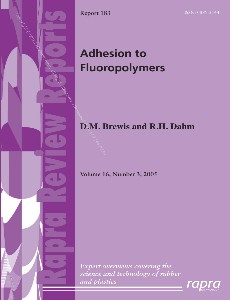The most effective methods to pretreat fully fluorinated polymers were developed in the 1950s. Much work, especially on electrochemical and plasma treatments, has since been carried out but to date these have not proved as effective as the early methods.
Partially fluorinated polymers may be treated like polyolefins, for example, flame, and plasma treatments are very effective. Aqueous and alcoholic solutions of Group I hydroxides are also very effective.
Fluoropolymers can provide a combination of properties including high temperature resistance, excellent resistance to many chemicals and ultraviolet (UV) radiation, fire resistance and low friction. Fluoropolymers are relatively expensive and they are generally used in specialised applications such as linings for chemical plant, spacecraft coatings that are resistant to atomic oxygen, fire-resistant coatings for cables, and of course, non-stick functions. There are more than twenty different fluoropolymers that are commercially available.
Good adhesion is required in a number of technologies involving fluoropolymers including adhesive bonding, painting, printing, metallisation (via vacuum or solution) and composite production. However, fully fluorinated polymers such as PTFE and FEP are notoriously difficult to adhere to, while partially fluorinated polymers such as PVDF and PVF may cause problems depending on the circumstances. To achieve a satisfactory level of adhesion, it is often necessary to carry out a pretreatment with both fully and partially fluorinated polymers.
< หน้าหลัก / หนังสืออิเล็กทรอนิกส์ / Adhesion to Fluoropolymers,V.16, N.3,2005 >
Adhesion to Fluoropolymers,V.16, N.3,2005

เนื้อหาอย่างย่อ
หมวด: Textbook - Eng & Tech

.png)
.png)
.png)